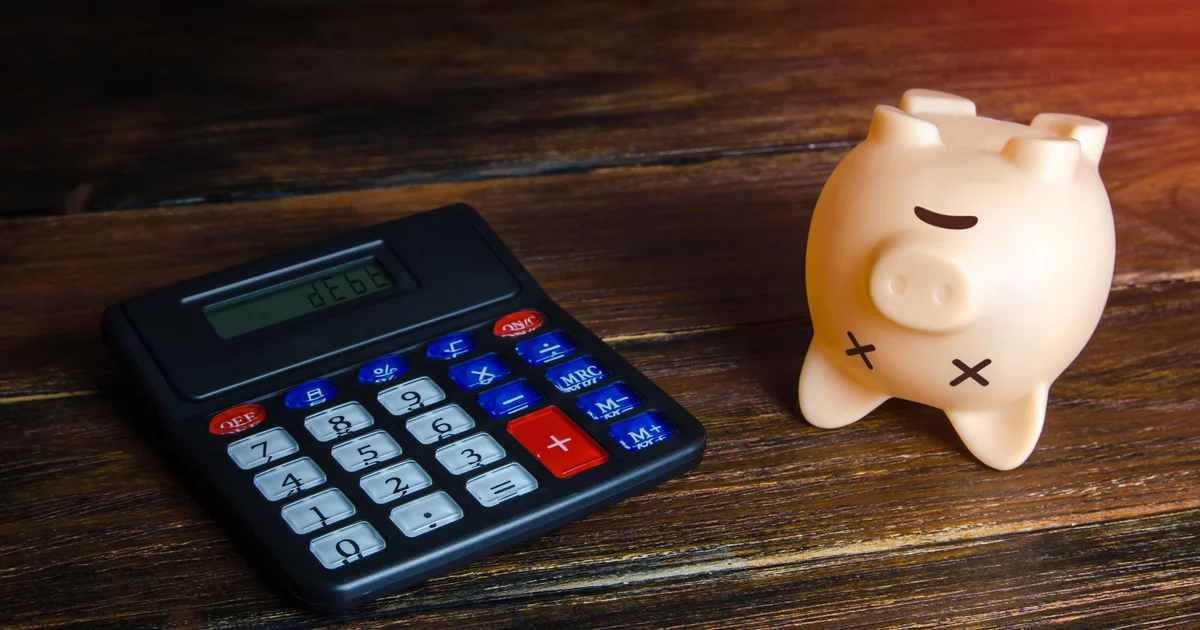Copyright CBS News

Borrowing has become a normal part of life for most people, especially as everyday costs continue rising. Whether it's groceries, gas or housing, many Americans are now relying more heavily on credit to handle the gap between their expenses and their income. That's part of why the latest data shows that household debt is climbing yet again — a sign that more borrowers are feeling the strain of high prices, persistent inflation and a tough job market. And, for millions of borrowers, that increased dependence on credit is pushing their budgets into more precarious territory. While some forms of borrowing can help you move forward financially, like financing a home or advancing your education, other types of debt do little more than drain your wallet and restrict your financial options, especially over time. In fact, the debt that grows fastest or costs the most is often the same debt that quietly undermines your financial stability. Still, many borrowers carry it for years without fully realizing how costly it can be, especially now that interest rates are well into the double digits. That's why understanding what qualifies as "bad debt" matters right now. With borrowing costs high, the type of debt you carry can make a meaningful difference in your ability to save, build credit and manage financial setbacks. Find out what options you have for tackling your high-rate debt today. What is considered bad debt (and why should it matter to borrowers)? At its core, bad debt is any type of borrowing that costs you more than it gives back. Unlike good debt, which supports long-term financial growth or provides lasting value, bad debt typically offers no meaningful return. Instead, it drains your cash flow, limits your financial flexibility and often carries steep interest rates that make it difficult, or in many cases, nearly impossible, to pay off. Credit card debt is the most common example of this type of debt. With average APRs hovering above 22% today, any revolving credit card balances you carry can grow rapidly, even when you're making regular payments. That's why revolving debt is often considered the most harmful. It can compound quickly and trap borrowers in long repayment cycles. But bad debt isn't limited to credit cards. Other examples include: High-rate personal loans, especially those used for nonessential expenses Store credit lines, which often carry promotional terms that later jump to steep APRs Payday loans, which can come with three-digit effective interest rates and heavy fees Buy now, pay later (BNPL) debt, which can snowball if you're juggling multiple payment plans Auto loans with extended terms, which can leave you owing more than your car is worth What ties these debts together is the lack of long-term benefit and the tendency to grow quickly when payments are delayed. And, that growth matters more today, as inflation and higher borrowing costs make it harder for many households to keep up with both everyday bills and their monthly debt obligations. Bad debt can also affect your credit. Your credit utilization, which is the percentage of your available credit that you're using, plays a major role in your credit score. High balances and maxed-out cards can drag down your score, making future borrowing more expensive or even inaccessible. Learn how a debt relief expert can help you with your debt problems now. How to get rid of bad debt quickly (and affordably) Once you know you're dealing with bad debt, the next step is figuring out the most affordable path to get rid of it. Here are some of the most effective options to consider right now: Consolidate it with a lower-rate option If you have good credit, using a debt consolidation loan to roll all of your high-rate balances into a single fixed-rate payment can pay off. Because consolidation loans typically have significantly lower rates than credit cards, this approach can reduce your monthly bill and help you pay down your principal faster. Borrowers with excellent credit may see especially meaningful savings. Get help from a reputable debt relief company For borrowers who can't keep up with their minimum payments or who have already fallen behind, debt settlement, also known as credit card debt forgiveness, may be a more realistic option. With this approach, a debt relief company works on your behalf to negotiate with creditors, aiming to reduce the total amount you owe in return for a lump-sum payment on the account. This can significantly lower your repayment burden, but it's most suitable for people in serious financial distress who need a more immediate solution. Work with a credit counselor on a tailored debt management plan A debt management plan offered through a credit counseling agency can consolidate your payments into one monthly obligation and may reduce your interest rates and fees during the process. While these plans take several years to complete, they offer structure, support and a clear timeline for the payoff, which can be especially helpful if you're overwhelmed by multiple debt obligations. Take advantage of the hardship help available to you If you're facing a temporary but serious financial setback, many credit card issuers and lenders offer temporary hardship arrangements that can reduce your interest rates, waive fees or provide a structured repayment plan. These programs can buy you breathing room if you're dealing with a setback like a job loss or major medical issue. The bottom line Bad debt doesn't just strain your monthly budget. It affects your long-term financial options, too. And, with interest rates still elevated and household debt levels climbing, understanding what qualifies as harmful debt is more important than usual. Whether you're carrying high-rate credit card balances, juggling store cards or struggling with payday loans, the key is recognizing the problem early and taking steps to resolve it. And if you need support, one of your debt relief solutions may offer a more affordable path toward clearing those balances for good.



